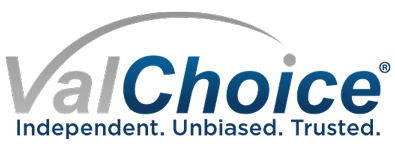Are you having difficulty sleeping? We have just the answer. Read through this list of auto insurance definitions. If you’re not asleep by the time you get to “uninsured motorist” then the fun really begins. Try out our car insurance calculator. It’s free. It’s easy. Best of all, you see how car insurance is priced so you can know if you’re getting a fair price. Just click the button below to use the calculator.
Auto Insurance Definitions
Additional Insured – All drivers in the household are typically on one insurance policy. There’s a primary driver. The primary driver is the person that applies for the insurance and is responsible for paying the bill. Other drivers are considered “additional Insured” drivers.
At-fault accident – The person found at-fault is the person that caused the accident. Fault can be shared if multiple violated laws or rules of the road. If you are found at-fault, your liability insurance pays — up to the policy coverage limits — for people or property that you damaged. If the cost is more than your coverage limits, you personally owe the money to pay the remaining amount.
Auto insurance quote – Like any “quote” this tells you the price of the insurance and the coverage it includes. Typically a quote implies a very precise cost. In auto insurance, the term “quote” is used more liberally and is often actually an estimate.
Car Insurance rate – The term “rate” is used interchangeably with “price” in the insurance industry.
Collision insurance / coverage – Collision insurance pays to fix your vehicle when you cause the accident. Collision insurance is optional if you own the vehicle. This type of insurance is usually mandated by a lender if there is a loan or lease on the vehicle.
Comprehensive insurance / coverage – Comprehensive insurance pays to fix your vehicle when something happens, other than an accident. Examples include: hail damage, vandalism, theft, a falling branch. Comprehensive insurance is optional if you own the vehicle. This type of insurance is usually mandated by a lender if there is a loan or lease on the vehicle.
Coverage limit – The maximum amount an insurance company will pay for each accident. Limits apply on a per accident basis.
Covered loss – Insurance will pay, up to policy limits, for a covered loss. If something happens that is not a covered loss, insurance will not pay for this. An example of a loss that is not covered by auto insurance includes mechanical problems with the vehicle.
Declarations page – This is a short summary of the insurance policy covering specific items that are or are not included. For example, liability limits, drivers and vehicles insured.
Deductible – Deductibles apply to collision and comprehensive insurance, not liability insurance. The deductible is the amount you owe before the insurance company pays. For example, if you need $5,000 of repairs and have a $500 deductible. You pay $500, then the insurance company pays $4,500.
Effective date – When your insurance coverage goes into effect. If you open the policy today, the effective date is either today, or some specific date in the future. If you had an accident yesterday, that’s before the effective date and would not be covered.
Exclusion – Anything not included in your coverage is an exclusion. Insurance will not pay for items excluded from the policy.
Full coverage – This type of insurance includes Liability coverage, Collision insurance and Comprehensive insurance.
Gap insurance – This type of coverage pays the difference between the value of the car and the loan amount. This may be required by a lender if you have a loan that may be greater in value than what an insurance company will pay if the vehicle is totaled or stolen.
Liability insurance – When you cause an accident, your liability insurance pays for the personal injuries and property damage of the other party. If the other party causes the accident, their liability insurance pays for the personal injuries of you and your passengers as well as property damage. There are limits on liability insurance that you select. If the cost of the accident is greater than the limits you paid for, you owe the remaining amount.
Minimum liability insurance – Each state mandates a minimum liability insurance amounts drivers must have. Minimum insurance amounts are insufficient to cover the costs of serious accidents.
Medical payments – Also referred to as MedPay. Pays for medical costs for you and your passengers, no matter who caused the accident.
Personal Injury Protection (PIP) – Similar to MedPay, but will pay some additional costs that MedPay won’t such as lost wages.
Personal Responsibility states – New Hampshire and Virginia are known as personal responsibility states. This means they do not have a legislated minimum coverage limit. However, they do have financial responsibility laws. Drivers without insurance are personally responsible for damage they cause.
Policy period – The amount of time the insurance policy is in force. Typically six or twelve months for auto insurance.
Primary use – How you commonly use the vehicle. Options typically include: pleasure, commuting, business and farm.
Premium – The amount of money you must pay for coverage.
SR-22 – An official form some states require in order to get your license after having it revoked for serious infractions like DUI, driving without insurance or reckless driving.
Underwriting -The process of assessing the risk of each driver. This process determines the rate/price for each driver.
Uninsured motorist – A driver that does not have insurance. The states of New Hampshire and Virginia do not have.
Underinsured motorist – A driver that has insurance, but not enough to cover the cost of an accident they cause.
How good is your insurance company?
Now that you made it through the auto insurance definitions, find out how good your insurance company is. Every driver should know how good their insurance company is. Many insurance companies advertise they have the lowest prices or lowest rates. However, no matter how little the insurance costs, if the company won’t pay a claim, it was a waste of money. Find out how good your car insurance company is by clicking the button below.
Want to know the best car insurance companies?
ValChoice rates every auto and home insurance company in the industry. Find out the best companies by clicking the button below.
ValChoice does not get paid to rate insurance companies. We rate insurance companies because we believe that any purchase a consumer is mandated to buy, they deserve to know how good the providers are when it comes to protecting them.


No comments yet.